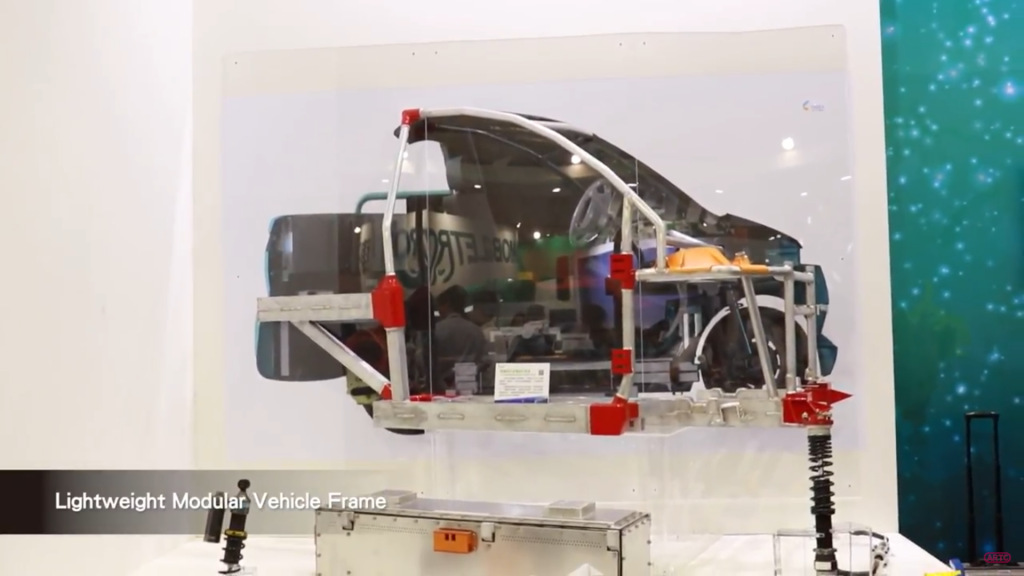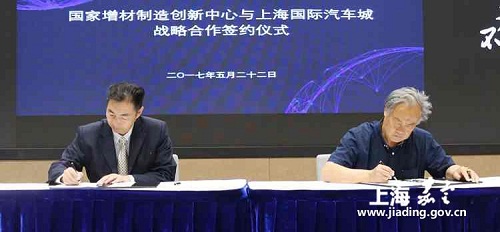At the 2017 TAIPEI AMPA/AutoTronics Taipei Show, the Taiwan Automotive Research Consortium (TARC) showcased a new electronic vehicle (EV) with 3D printed parts. The vehicle has been designed to reduce weight and provide a more economic level of energy consumption.
Additionally, Shanghai International Automobile City has signed an agreement with China’s National Additive Manufacturing and Innovation Center focused on a 3D printing platform for the design, research and material development of “new energy” cars.
TARC’s 3D printed PLA electric car
With a single charge, TARC’s EV can travel between 60 and 100km (37 – 62 miles) at a maximum output and torque of 7kW and 44N·m respectively. Designed for city living with just two seats, total dimensions amount to just 2,780mm x 1,440mm x 1,570mm (L x W x H).

3D printed parts of the car can be found in the interior and the main body, made from corn-based PLA plastic. The doors and operational components are made from metal using traditional manufacturing methods. This includes the car’s inner frame, which is made from lightweight aluminum and takes on a modular design.

As part of 21 innovative technologies developed at TARC for future car performance, the EV was exhibited alongside an autonomous vehicle demonstration, sensor systems, and a newly developed electric belt starter generator (eBSG). This eBSG replaces the traditional engine alternator with an electrical motor, producing 20% less emissions than a traditional combustion engine.
Automobile City additive manufacturing partnership
The Shanghai International Automobile City, home to the F1/MotoGP Shanghai International Circuit and Shanghai Volkswagen (the largest auto manufacturing base in China), has signed a deal with China’s National Additive Manufacturing Innovation Center.

Together the parties will work toward effective additive manufacturing for cars, and provide 3D printing services to auto companies in the R&D process. With 3D printing, the partners also believe they can consolidate the number of individual car parts, typically around 20,000, to just 40.
In addition, the partnership seeks to build an automobile research institute in the region to strengthen R&D in the new energy vehicle sector.
3D printer car integration
With improvements to the quality and classification of plastic and metal 3D printing more vehicles are emerging with additively manufactured parts. Divergent’s Blade supercar has a modular, 3D printed metal frame, and is scaling production through a partnership with SLM Solutions. Arizona’s Local Motors, is the manufacturer of the autonomous Olli vehicle and the Strati car, with an entirely 3D printed plastic chassis.
Additive manufacturing is also proving its utility for the production of engine components. A 3D printed nozzle used in the APU of a Safran Leonardo AW189 helicopter has recently been certified for flight, and GE’s LEAP engine, with a 3D printed fuel nozzle, has received $27 billion in orders at the 2017 Paris Air Show.
Stay up-to-date with the latest 3D printing news by subscribing to our newsletter and following us on twitter and Facebook.
Featured image: The Shanghai International Circuit for F1 and MotoGP races, at the center of the Shanghai International Automobile City. Photo by Emily Walker, jemsweb on Flickr.



